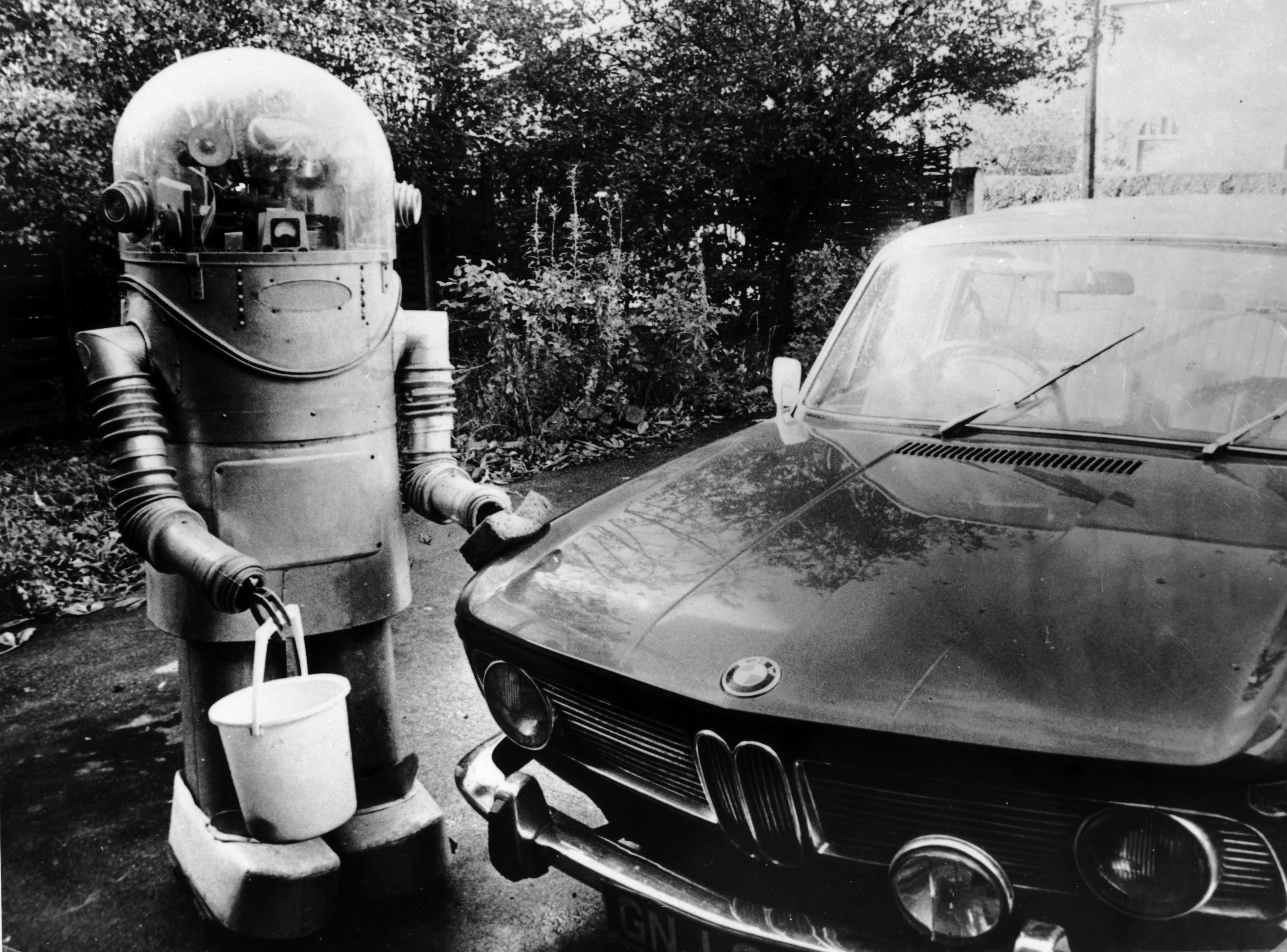Who's afraid of the big bad robot?
Relax: A wicked automaton isn't coming for your job


Beware the Bogeybot. This nefarious (and cheap!) automaton comes for the jobs of all the naughty workers who never bothered to learn a new skill.
It's also a complete fairy tale. For years, economic analysts and businesspeople have warned that workers just weren't learning the skills necessary to keep up with automation. And the moment robots became cheap replacements, the unskilled would be out on the street. But now that the American economy has clawed its way back to some semblance of health, this story is being revealed as essentially fiction.
The Wall Street Journal has a new report about how the fast food industry is increasingly turning to automation. You'd think this would spell disaster for food service workers: A 2013 University of Oxford study ranked the industry in the top fifth of 700 occupations with the most automatable jobs. But instead, employment in fast food has actually risen — by 1.6 million jobs since May 2013. At the last business cycle peak in 2007, just before the Great Recession, fast food restaurants employed 17.4 people per establishment. Today it's 18.4 people per establishment.
The Week
Escape your echo chamber. Get the facts behind the news, plus analysis from multiple perspectives.

Sign up for The Week's Free Newsletters
From our morning news briefing to a weekly Good News Newsletter, get the best of The Week delivered directly to your inbox.
From our morning news briefing to a weekly Good News Newsletter, get the best of The Week delivered directly to your inbox.
It turns out restaurants are using automation to make employment more attractive — to cut out the drudgery and repetitive tasks. Wendy's, for instance, is using automation to wash bowls, spatulas, and utensils, and to clean bacon grease off ovens. Panera has turned to in-store kiosks to handle orders, allowing workers to focus on crafting better food. Arby's is automating its ovens to handle prep-cooking, so employees don't have to start so early. Dunkin' Donuts is using machines to print previously hand-written labels and to brew coffee.
"I don't have to constantly be worried about other smaller tasks that were tedious," Alexandra Guajardo, the morning shift leader at a California Dunkin' Donuts, told the Journal. "I can focus on other things that need my attention in the restaurant."
Unemployment among restaurant workers is 6 percent — the lowest rate on record. It's also an industry that's infamous for high turnover, precisely because the jobs are often unpleasant.
In a weak economy with high unemployment, that's not a problem for business owners. If one employee gets fed up with a tedious grind and quits, plenty of other people are desperate for work. The employer doesn't even have to hike pay. That also means labor remains cheap, so why go to the expense of adding robots? It's important to note that "more automation" is just another word for "more productivity growth." Historically, periods of high unemployment have accompanied low productivity growth. The job loss we tend to blame on robots is actually usually due to macroeconomic policy failures, and only holds back robots as well as humans.
A free daily email with the biggest news stories of the day – and the best features from TheWeek.com
But when unemployment falls, the whole script flips: Suddenly employers have to improve pay and work conditions to hold onto their workers. With a booming economy, labor markets tighten, creating more opportunities for workers. So how do businesses respond? By automating unappealing tasks and unfilled positions. So rather than automation driving unemployment, employment tends to drive automation.
There's a similar dynamic going on when it comes to workers' skills.
One question you almost never hear asked is, if businesses can't find workers with the right skills, why don't they just hire unskilled people and train them? Well, first off, because they don't like to: Training workers takes time and money. And second, because they don't have to: When unemployment is high, enough people are desperate for work that they'll pour their own time and money into extra education and training if they can afford it.
Unfortunately, 3.8 percent unemployment is a rare thing. Over the last few decades, high unemployment has been common enough that companies have gotten lazy. Businesses offering to pay for training have fallen by half since 1996, and those offering on-the-job training have fallen by 35 percent.
But again, when unemployment drops, everything changes. The New York Times talked to APT Manufacturing Solutions, an Ohio company that actually builds and sells robots. But with unemployment so low, even APT can't find the workers it needs. So the company is now offering apprenticeships and helping cover its workers' tuition costs. It even constructed a training center in its headquarters to teach local high school students math, electrical engineering, and machine work.
"I never thought that I would be training high school students in our facilities," Anthony Nighswander, the president of APT, told the Times. "What I knew was that I was in survival mode. I knew the orders for robots and for automation were coming in faster than I could get the jobs out."
This is precisely what's happening across the country. Back during the recession, anyone without "skills" had a hard time getting a job. But now that there's a lot of competition for workers, suddenly "skills" aren't such a barrier anymore.
Low unemployment: It's how you keep the Bogeybot away.
Jeff Spross was the economics and business correspondent at TheWeek.com. He was previously a reporter at ThinkProgress.
-
 Will Trump’s $12 billion bailout solve the farm crisis?
Will Trump’s $12 billion bailout solve the farm crisis?Today’s Big Question Agriculture sector says it wants trade, not aid
-
 ‘City leaders must recognize its residents as part of its lifeblood’
‘City leaders must recognize its residents as part of its lifeblood’Instant Opinion Opinion, comment and editorials of the day
-
 10 upcoming albums to stream during the winter chill
10 upcoming albums to stream during the winter chillThe Week Recommends As the calendar turns to 2026, check out some new music from your favorite artists
